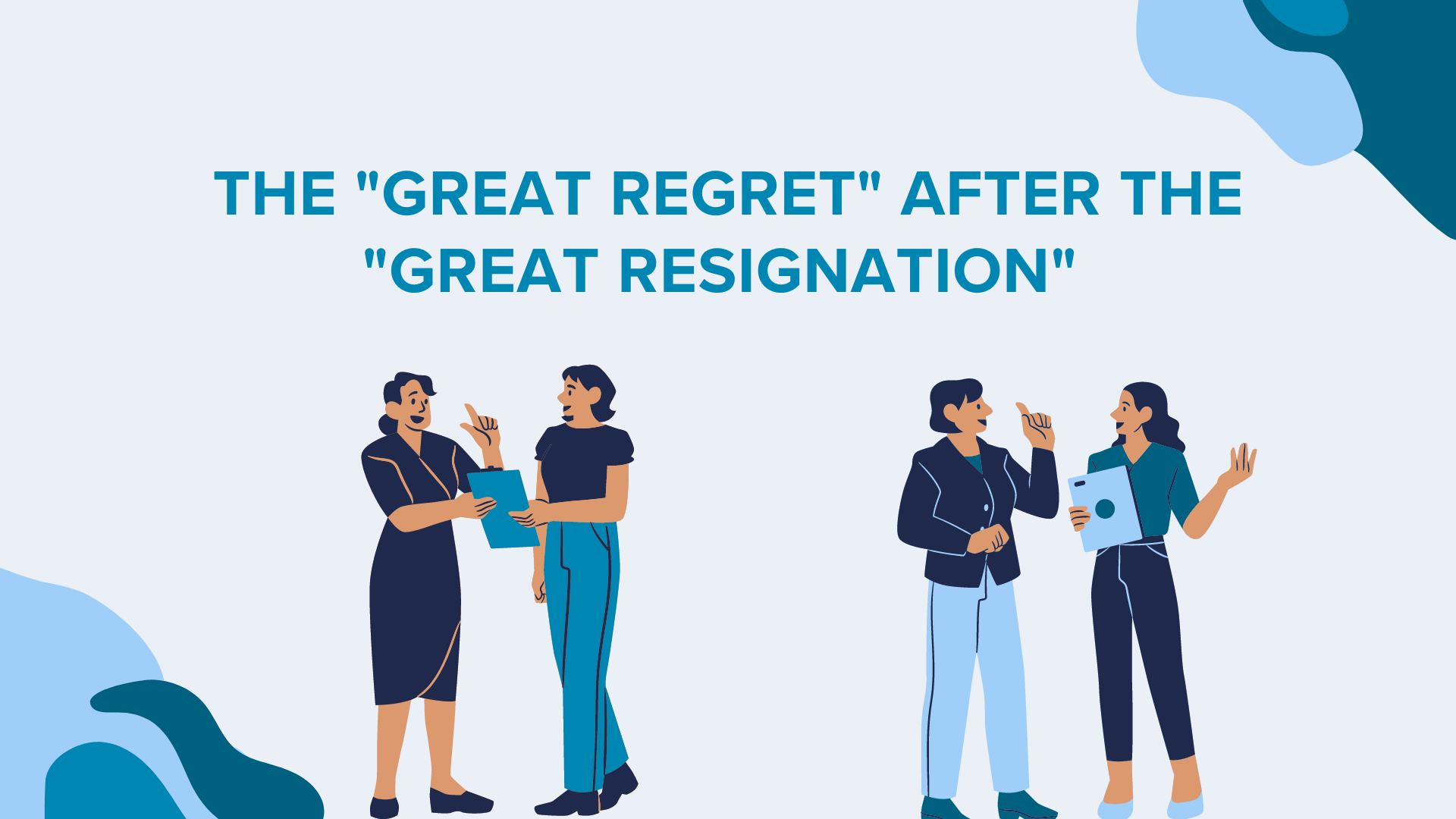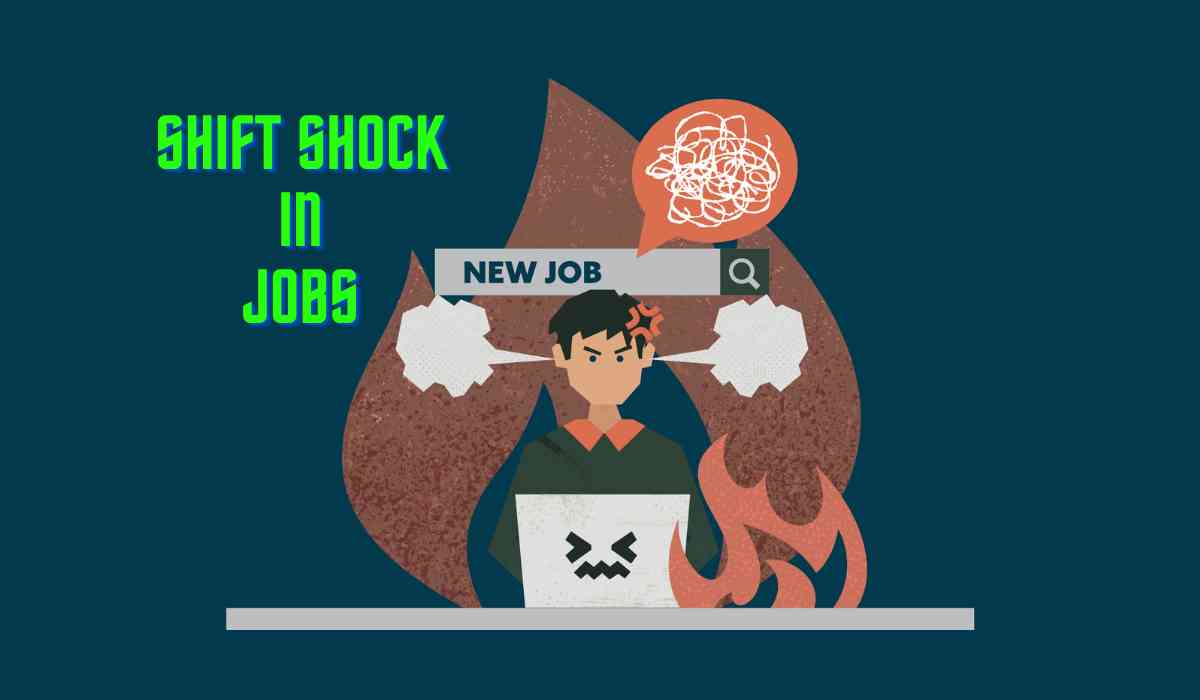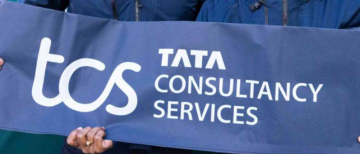Have you ever started a new job and found yourself feeling a bit lost? Well, you're not alone!
The recent wave of workplace transformations, including shifts to hybrid models and restructuring, has left many professionals experiencing what's called ‘shift shock.’ This term emerged as one of the top 10 workplace trends in 2023 and has continued to gain attention in early 2024.

So, what exactly is “shift shock”?
It's the realization that your new job isn't quite what you anticipated, and it's generating buzz online, particularly among younger job seekers. As resignations surge across various countries, many workers are discovering that their new roles or employers aren't meeting their expectations, leading to feelings of disappointment, surprise, or regret. According to a recent Muse Shift Shock Survey, 72% of the Muse audience reported experiencing “shift shock,” with 80% stating that leaving a new job before six months is acceptable if it fails to meet expectations.

Why is "shift shock" still trending in today's workplace?
Shift shock remains a trending issue due to its alignment with broader workforce trends like the Great Resignation and evolving work attitudes among younger generations. It underscores the gap between employees' expectations and their actual experiences in new roles or with new employers.
As more individuals prioritize job satisfaction, work-life balance, and environments that prioritize well-being, issues like shift shock gain prominence. The term has gained traction as a means to describe and analyze the impact of workplace culture and practices on employee engagement and retention.
"Shift shock" aligns with recent trends such as quiet quitting, low-stress jobs with ambitious goals, and productivity theater, reflecting Gen Z's preference for flexible, balanced roles while rejecting the "churn-and-burn" culture of overwork. This culture takes advantage of competitive achievers who habitually overextend themselves, resulting in low engagement, high turnover, and burnout rates.
According to LinkedIn, the average person changes jobs every 4.2 years, highlighting the career transitions that often lead to initial disorientation when moving to a new role or company. Many Gen Z and millennials report regret after accepting what they thought would be their dream job.

What are the factors contributing to shift shock?
Besides misleading job descriptions, lack of transparency about company culture, and mismatched work arrangements, other critical factors contributing to shift shock include unmet benefit expectations and toxic, inflexible work environments.
The journey of shift shock typically begins with unfamiliarity and disorientation in a new role and workplace, often leading to regret. This experience can increase stress, anxiety, and isolation, ultimately affecting productivity, engagement, and well-being.

Exploring the Stats on 'Shift Shock'
The Muse's Shift Shock survey revealed the following key findings:
-
Nearly a third (29%) of respondents encountered "shift shock" concerning both their role and the organization.
-
Over four in ten (41%) would contemplate leaving a new position within two to six months if they experienced "shift shock" upon joining.
-
Almost half (48%) would consider reverting to their previous job if they encountered "shift shock" in a new workplace.
-
A significant majority (80%) believe it's justifiable to depart from a new job before six months if it doesn't align with expectations.

What Job Seekers Can Do If They Get ‘Shift Shocked’?
When faced with the disorientation of "shift shock," many employees feel compelled to seek new opportunities or engage in job hopping. To navigate this challenge effectively, job seekers must adopt a proactive approach and prioritize clarity in their decision-making.
Here are some proactive steps to mitigate shift shock:
-
Instead of viewing change as a setback, see it as an opportunity for personal and professional development. Understand that discomfort often precedes growth.
-
Seek support from colleagues and supervisors. Recall the reasons that motivated you to pursue this opportunity in the first place. Being proactive can help you regain perspective and motivation.
-
Maintain transparent and honest dialogue with your team, peers, and manager. Effective communication fosters understanding and reduces uncertainty.
-
Be prepared to adjust to different work styles and expectations. Embrace the challenges as learning opportunities and strive to acclimate swiftly.
-
Managing emotions is crucial during times of transition. Invest in self-care practices that promote resilience and well-being. Believe in your capacity to adapt and influence change.
-
Before accepting a role, inquire about job responsibilities and company culture. Ensure alignment between your personality and the role to minimize unexpected challenges.
-
Sometimes, shift shock occurs due to overly optimistic portrayals of roles or organizations during interviews. Organizational leaders and hiring managers should provide realistic insights to ease transitions.
-
Clearly articulate your expectations for the role, including aspects such as responsibilities, salary, and work environment. Asking specific questions throughout the hiring process helps in making informed decisions.
-
While hiring managers offer valuable insights, conduct your own research about the prospective roles and organizations. This empowers you to make well-informed choices aligned with your career goals.
By adopting these strategies, job seekers can navigate "shift shock" more effectively, embracing change as an opportunity for growth and ensuring a smoother transition into new roles.

How Leaders Can Address Workplace Stress?
Encountering "shift shock" often occurs when hiring managers present an overly optimistic view of a role or company, setting unrealistic expectations. What more can companies do to mitigate "shift shock," ensuring their hiring strategies benefit both candidates and employers?
To address "shift shock" effectively, leaders can implement various strategies:
-
Provide comprehensive support and resources such as training programs, access to mental health services, and one-on-one coaching. These offerings empower employees to navigate changes confidently.
-
Foster a positive, inclusive workplace culture that values and supports employees. Promote teamwork, celebrate accomplishments, and create an atmosphere where staff feel comfortable sharing ideas and concerns.
-
Encourage feedback and collaboration to help employees adapt to changes. Involving them in the transition process increases their commitment and sense of control.
-
Develop emotional intelligence among leaders and employees to better understand and manage emotions during change, fostering empathy and resilience.
-
Monitor the team's well-being post-change through regular check-ins, making adjustments as necessary to support their adjustment.
-
Invest in professional development to enhance skills and prepare employees for new roles resulting from changes.
-
During hiring, ensure alignment of candidate expectations with organizational needs and future job evolution, fostering transparency about post-hire expectations.
-
Use assessments and tools during hiring to assess long-term fit.
-
Post-hire, equip managers to discuss and address employee concerns and "shift shock."
Recognizing and addressing "shift shock" through proactive strategies and effective communication is crucial in today's work environment. By navigating career transitions with resilience and innovation, individuals and organizations can thrive amidst change, defining success in the future of work.
© Copyright 2024. All Rights Reserved Powered by Vygr Media.























